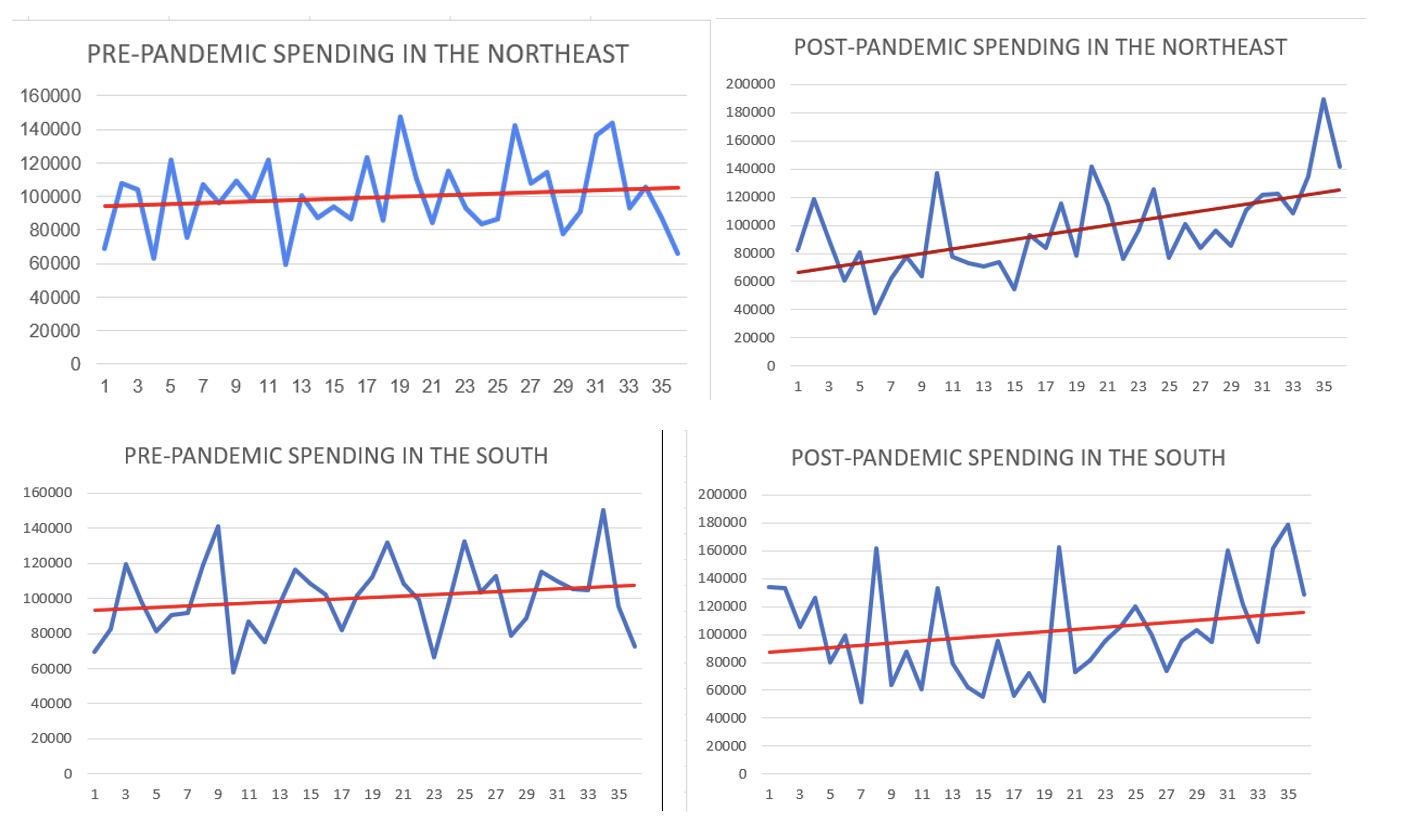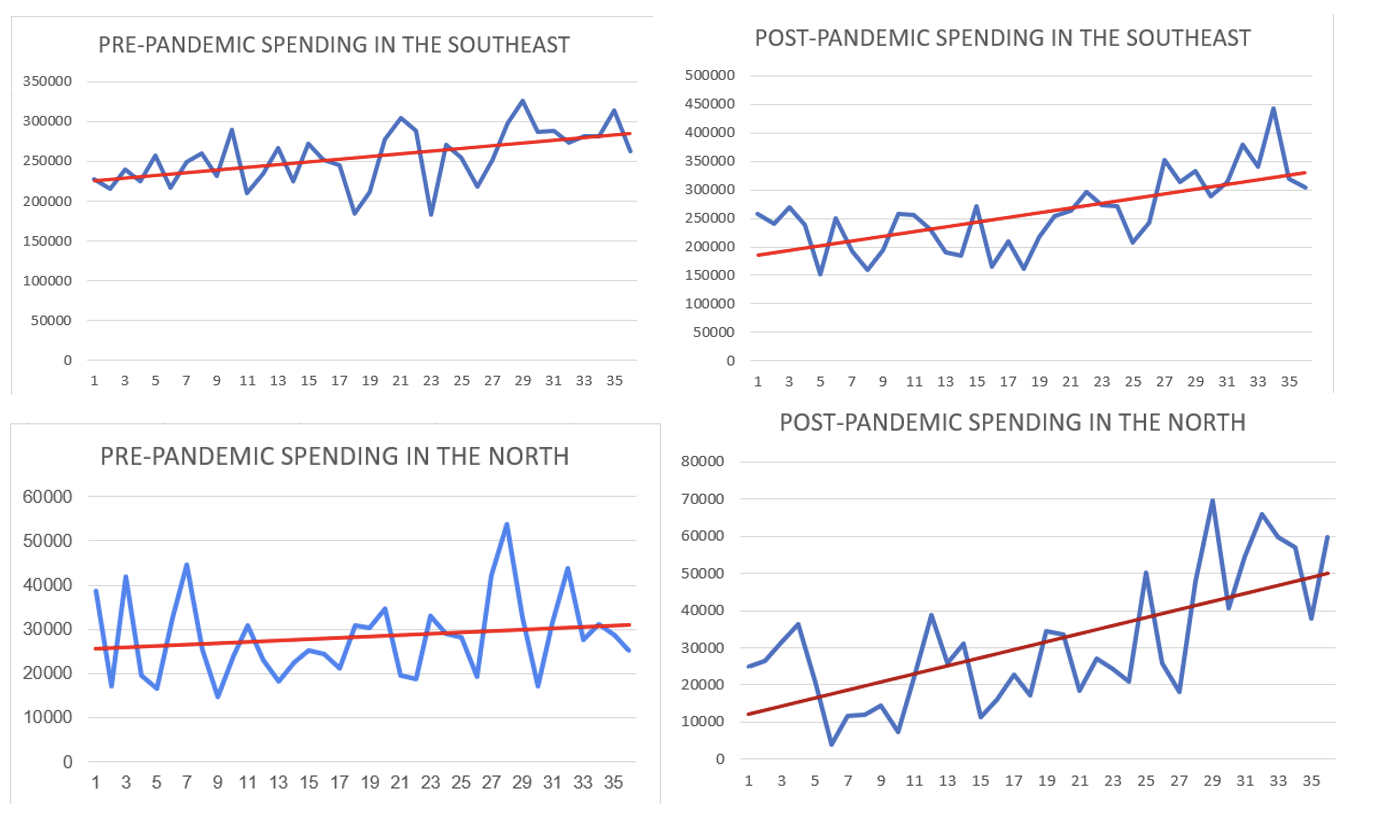Pre-Pandemic Period (2017-2019): Northern Region: Peak in spending (PIS) in 04/2019 was U$14,841.60, totaling U$2,929.123.12, with an average of U$7,792.18, a Standard Deviation (SD) of U$2,535.70, and an Increasing Trend Line (ITL). Northeastern Region: PIS in 07/2018 was U$40,659.62, totaling U$991,218, with an average of U$27,533.84, a SD of U$6,162.22, and ITL. Southeast Region: PIS in 05/2019 was U$90,040,28, totaling U$2,528.80, with an average of U$70,321.11, a SD of U$9,644.71, and ITL. South Region: PIS in 10/2019 was U$41,501.81, totaling U$995,113.04, with an average of U$27,642.02, a SD of U$5,770.93, and ITL. Mid-West Region: PIS in 09/2017 was U$21,910.64, totaling U$427,950.50, with an average of U$11,997.79, a SD of U$4,301.50, and ITL. Post-Pandemic Period (2020-2022): Northern Region: PIS in 05/2022 was U$15,061.07, with a total of U$242,003.24, an average of U$6,722.31, a SD of U$3,730.74, and ITL. Northeastern Region: PIS in 11/2022 was U$40,984.06, with a total of U$747,770.81, an average of U$20,771.40, a SD of U$6,623.02, and ITL. Southeast Region: PIS in 10/2022 was U$95,920.90, with a total of U$2,010,219.03, an average of U$22,839.41, a SD of U$14,171.78, and ITL. South Region: PIS in 11/2022 was U$38,698.46, with a total of U$791,695.56, an average of U$21,834.68, a SD of U$7,632.66, and ITL. Mid-West Region: PIS in 09/2022 was U$16,184.50, with a total of U$300,432, an average of U$8,345.33, a SD of U$3,277.33, and ITL.


